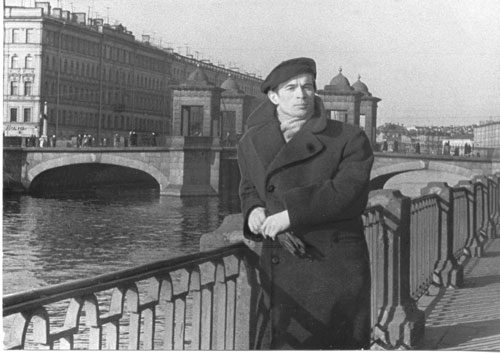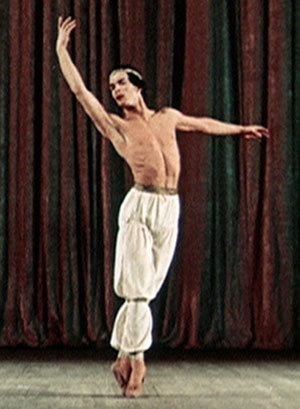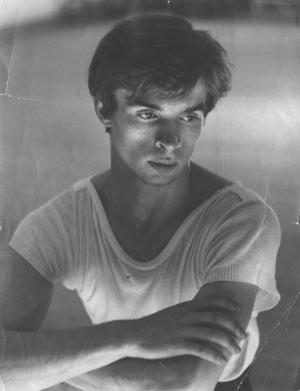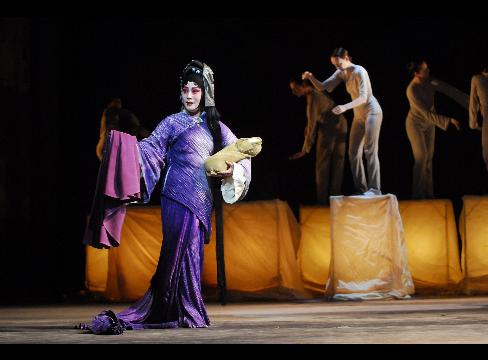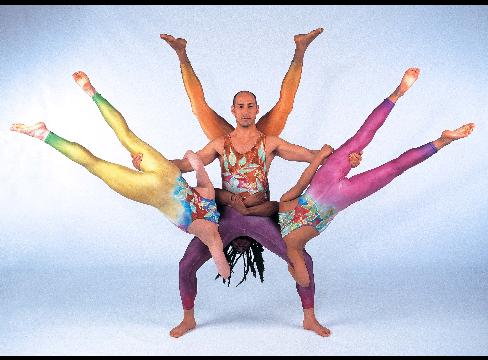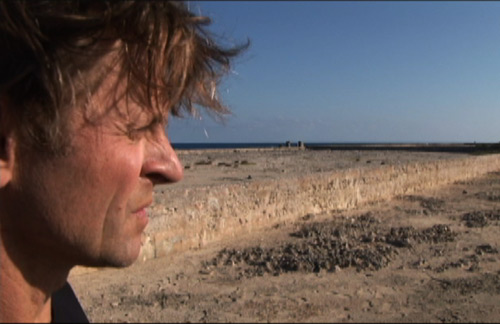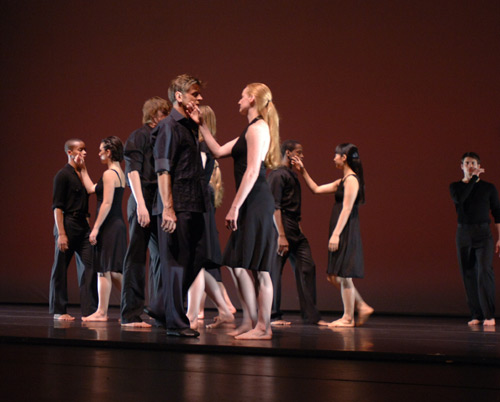This article originally appeared in Voice of Dance (http://www.voiceofdance.org) on September 21, 2007.
Big Dance Theater / Dance Theater Workshop, NYC /
September 19-22, 25-29, 2007
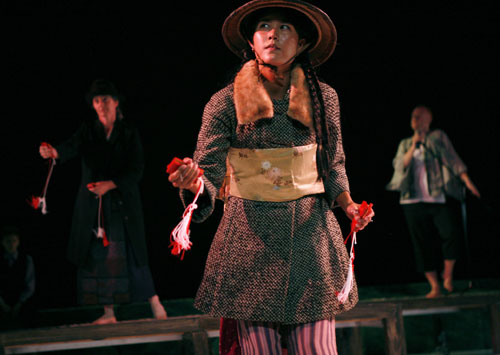
Big Dance Theater’s The Other Here. Photo by Julieta Cervantes.
Here’s the recipe for Big Dance Theater’s The Other Here, just arrived at Dance Theater Workshop after a February premiere at Japan Society and a tour including Jacob’s Pillow. I don’t think the auteurs of this dance-theater group, Annie-B Parson and Paul Lazar, will object to my going public with it, because it operates on eternal human ground. The piece looks like the “pretend” games of vividly imaginative pre-literate children, in which the youngsters dress themselves in a motley assortment of co-opted clothing and fervidly enact, in words and motion, free-form stories that change as easily as weather though their theme holds strong at the center.
These are The Other Here‘s specific ingredients: Two texts: a pair of stories, The Carp and Life at Mr. Tange’s by the celebrated Japanese writer Masubi Ibusi (1898-1993), who absorbed much about mood and human nature from Chekhov, and teaching materials published by American life-insurance purveyors happened upon in a used-book store by the troupe’s dramaturg. Westerners’ reverent but unavoidably skewed appreciation of traditional Japanese customs. Okinawan dance, reimagined by Parson, who comes from an American postmodern culture and accepts that fact blithely. Music ranging from Okinawan café ballads of the 1920s, rendered with just the right degree of sentiment by the impossibly pretty Heather Christian, and a deafening dose of latter-day pop. Gender fluidity, as in the diminutive Jess Barbagallo’s dangerously persuasive insurance broker. (Though she looks like Tom Sawyer, Barbagallo is the most seductive performer in the piece.)
And then there’s the fish. It’s a valuable white carp given by a dying friend to the protagonist, one Mehdi (played by Lazar, who doubles as an insurance salesman losing his grip as he ages). Mehdi reluctantly promises to be responsible for the creature’s fate and immediately, then over years, tries to find it another home. The carp, first shown in a Japanese wooden carrier-bucket, is, through Peter Flaherty’s video magic, transferred to a large pond and then a huge one, growing each time–like a problem one has never fully addressed.
Needless to say, Big Dance Theater’s most significant gift is for making disparate elements cohere in a realm beyond logic.
The atmosphere of the piece is nostalgic, regretful for promises unfulfilled, with pockets of gaiety (such as a bubbling clapping dance). It’s infiltrated by the glib lies of the life-insurance folks, which serve as a metaphor for the dangerous untruths we tell, hear, and swallow every day. At the same time, it points to a co-existent world, one that’s simpler, more honest and tolerant, in which pleasure and goodwill can flourish.
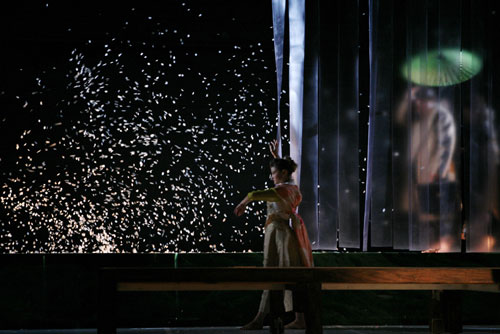
Big Dance Theater’s The Other Here. Photo by Julieta Cervantes.
Other spare special effects are marvels, too, especially the use of a stage-wide panel of colorless translucent strips that form an upstage sky-to-earth curtain. Designed by Takeshi Kata, it blurs the image of people moving on a platform behind it–like a couple sheltering under a parasol–to create images that quietly evoke the prints of old Japan.
The piece serves as a lovely hour of entertainment–not forcefully or even significantly theatrical, but with an ability to send out ripples like a stone lightly skimmed on the surface of a lake or, if you will, a carp suddenly shifting direction in its watery domain. It is inordinately helped by the fact that its six performers–Barbagallo, Christian, Chris Giarmo, Molly Hickok, Lazar, and Jennie MaryTai Liu–are adorable, each in a different way.
The Other Here is crammed with enigmatic one-liners–amusing, profound, or both at once. “The truth of this life lies in its impermanence.” “There is so much magic in what we do.” As I understand it, some of the “pearls” come from the Ibusi stories, some from the insurance hawkers. More often than not, it’s hard to tell which. Now there’s irony for you.
© VoiceofDance.com 2007




